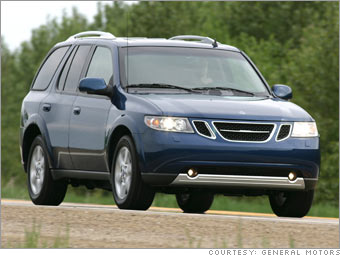In 2000, GM took full ownership of Saab.
The famously quirky Swedish car brand presents a challenge for the famously corporate American company, though. The very reason for GM's existence, after all, is platform sharing. What's the point of being General Motors if not to share engineering and development costs across different consumer brands?
On the other hand, the very soul of Saab is that of independence. Saab is a counter-culture product. You buy it because you want to be unique. They look and feel different from other cars.
Sharing with Saab has to be done very, very carefully. And mistakes have already been made. Even GM executives admit that the Saab 9-2X was a bad idea.
Creating a Saab by making cosmetic changes to a Subaru Impreza wagon might have filled a hole in Saab's product portfolio. And it wasn't a bad car. (It was every bit as good as a Subaru Impreza.) But there's no way that was a Saab.
After the 2006 model year, GM dropped the 9-2X as it dissolved its corporate relationship with Subaru. But, had it gone on much longer, serious damage could have been done to the Saab name.
With the 9-7X midsized SUV there was, at least, a greater attempt at differentiation in the design, The suspension and steering settings were also tweaked to make sure driving the 9-7X was different from driving the Chevrolet TrailBlazer it was based on.
New Saabs are now designed from the wheels up, but Saab will still share its basic engineering with other GM vehicles. A new Saab SUV might also have a Buick or Chevrolet cousin. But at least the requirements of Saab-ness would have been considered at the outset.

